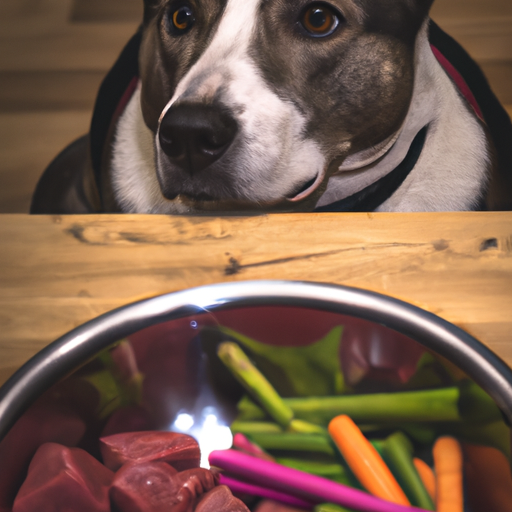Why Consider a Raw Diet for Your Dog?
Feeding your dog a raw diet can seem like a daunting task. You’re likely asking yourself, why should I bother? Well, dear caregiver, there are a number of potential benefits to a raw diet, including improved digestion, healthier skin and coat, reduced allergy symptoms, and more energy. But it’s essential to do it right, to ensure that your furry friend is getting all the nutrients they need.
What Does a Raw Diet for Dogs Include?
A typical raw diet for dogs usually includes a mixture of raw meat, bones, fruits, vegetables, and occasionally dairy and grains. But remember, your dog’s diet should be tailored to their specific needs. Here is a general breakdown:
- Raw, Meaty Bones: Chicken necks, turkey necks, and lamb or beef ribs can be excellent choices. They should make up about 50-60% of your dog’s raw diet.
- Muscle Meat: This should make up about 35% of the diet and can include beef, lamb, rabbit, and fish.
- Organ Meat: Liver, kidney, heart. These are nutrient-rich and should make up about 5% of the diet.
- Fruits, Vegetables, and Grains: These can make up the remaining portion of the diet. Apples, carrots, broccoli, and whole grains like brown rice can be included.
| Food Group | Percentage |
|---|---|
| Bones | 50-60% |
| Meat | 35% |
| Organ Meat | 5% |
| Others | 10% |
Getting Started with a Raw Diet
Starting a raw diet can seem like a big leap, but it’s easier than you might think. Here are a few steps to get you started:
- Do Your Research: Before changing your dog’s diet, make sure you’re well-informed. Talk to your vet and consider consulting with a pet nutritionist.
- Slowly Introduce Raw Food: Begin by adding small amounts of raw food to your dog’s usual diet. Gradually increase the amount over a few weeks until your dog is eating entirely raw.
- Monitor Your Dog’s Health: Keep an eye on your dog’s weight, energy level, and overall health. Consult your vet if you notice any changes.
Potential Risks and How to Avoid Them
While a raw diet can have many benefits, there are also potential risks, mainly if not done correctly. You must ensure your dog is getting all the necessary nutrients, and it’s also essential to handle raw food safely to prevent bacterial contamination. Some tips to avoid these risks include:
- Feed a balance of meat, bones, and other food groups.
- Clean all utensils and surfaces thoroughly after preparing raw food.
- Freeze raw food to kill parasites.
- Regularly check your dog’s health and consult with your vet.
Frequently Asked Questions
Q: Can all dogs eat a raw diet?
A: Most dogs can benefit from a raw diet, but it’s not suitable for all. Consult your vet before making any diet changes.
Q: Is a raw diet expensive?
A: The cost can vary. It can be more expensive than commercial dog food, but there are ways to make it more affordable.
Q: Can I mix raw food with my dog’s current dry food?
A: Yes, you can transition to a raw diet by gradually adding more raw food to your dog’s current diet.



